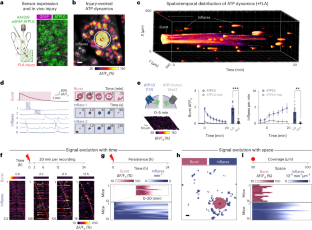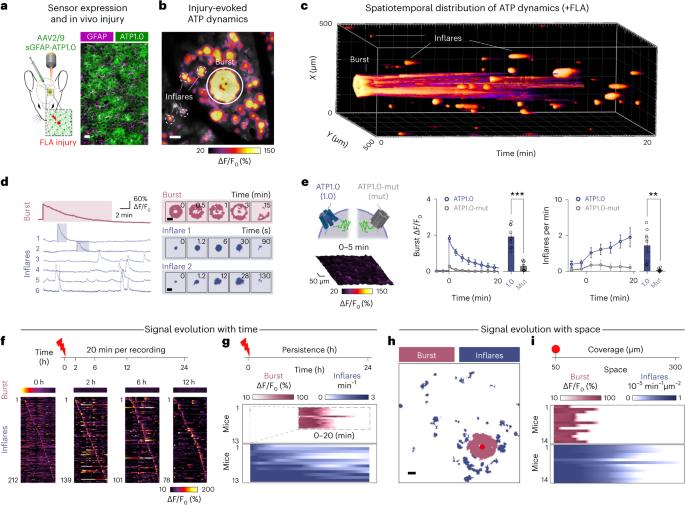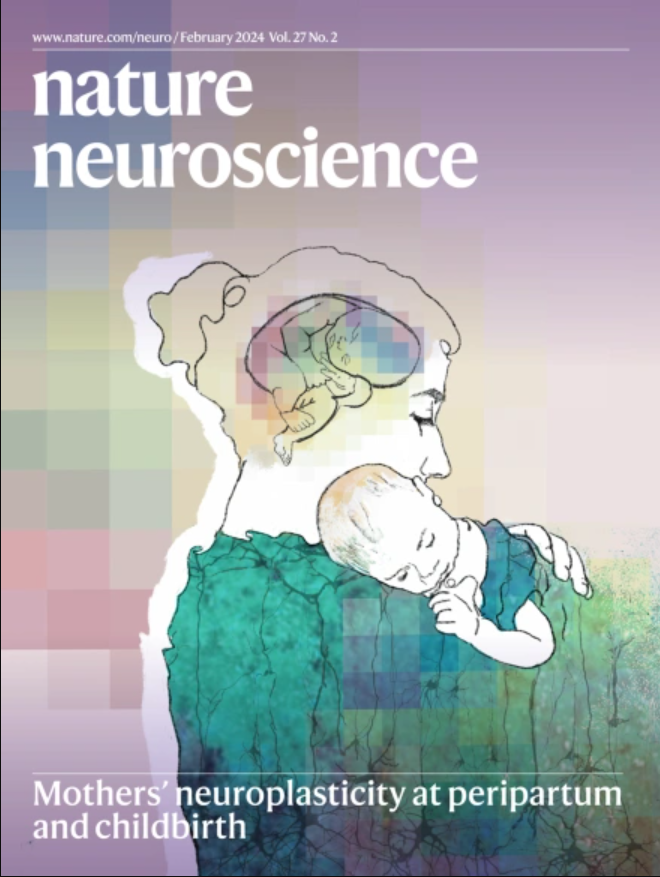时空选择性星形胶质细胞 ATP 动态编码小鼠脑损伤后小胶质细胞感知到的损伤信息
IF 21.2
1区 医学
Q1 NEUROSCIENCES
引用次数: 0
摘要
大脑损伤会导致与刺激特性相匹配的可调细胞反应,这表明存在编码和传递损伤信息的内在过程;然而,损伤信息编码的分子机制尚不清楚。在这里,我们利用 ATP 荧光指示剂,在成年雌雄小鼠体内鉴定了损伤诱发的时空选择性 ATP 动力--Inflares。Inflares由星形胶质细胞主动释放,是损伤的内部表征。Inflares通过频率变化在其群体水平上编码损伤强度和位置,并由小胶质细胞进一步解码,驱动其激活状态的变化。Inflares与损伤严重程度不匹配会导致小胶质细胞功能障碍和损伤结果恶化。在小鼠缺血性中风中阻断 Inflares 可减少继发性损伤并改善功能恢复。我们的研究结果表明,星形胶质细胞 ATP 动态编码损伤信息并被小胶质细胞感知。本文章由计算机程序翻译,如有差异,请以英文原文为准。


Spatiotemporally selective astrocytic ATP dynamics encode injury information sensed by microglia following brain injury in mice
Injuries to the brain result in tunable cell responses paired with stimulus properties, suggesting the existence of intrinsic processes that encode and transmit injury information; however, the molecular mechanism of injury information encoding is unclear. Here, using ATP fluorescent indicators, we identify injury-evoked spatiotemporally selective ATP dynamics, Inflares, in adult mice of both sexes. Inflares are actively released from astrocytes and act as the internal representations of injury. Inflares encode injury intensity and position at their population level through frequency changes and are further decoded by microglia, driving changes in their activation state. Mismatches between Inflares and injury severity lead to microglia dysfunction and worsening of injury outcome. Blocking Inflares in ischemic stroke in mice reduces secondary damage and improves recovery of function. Our results suggest that astrocytic ATP dynamics encode injury information and are sensed by microglia. The mechanisms regulating microglial response to brain injury are unclear. Here, the authors show that astrocytic ATP dynamics encode injury information and trigger microglia response affecting the tissue damage and recovery of function following injury in mice.
求助全文
通过发布文献求助,成功后即可免费获取论文全文。
去求助
来源期刊

Nature neuroscience
医学-神经科学
CiteScore
38.60
自引率
1.20%
发文量
212
审稿时长
1 months
期刊介绍:
Nature Neuroscience, a multidisciplinary journal, publishes papers of the utmost quality and significance across all realms of neuroscience. The editors welcome contributions spanning molecular, cellular, systems, and cognitive neuroscience, along with psychophysics, computational modeling, and nervous system disorders. While no area is off-limits, studies offering fundamental insights into nervous system function receive priority.
The journal offers high visibility to both readers and authors, fostering interdisciplinary communication and accessibility to a broad audience. It maintains high standards of copy editing and production, rigorous peer review, rapid publication, and operates independently from academic societies and other vested interests.
In addition to primary research, Nature Neuroscience features news and views, reviews, editorials, commentaries, perspectives, book reviews, and correspondence, aiming to serve as the voice of the global neuroscience community.
 求助内容:
求助内容: 应助结果提醒方式:
应助结果提醒方式:


